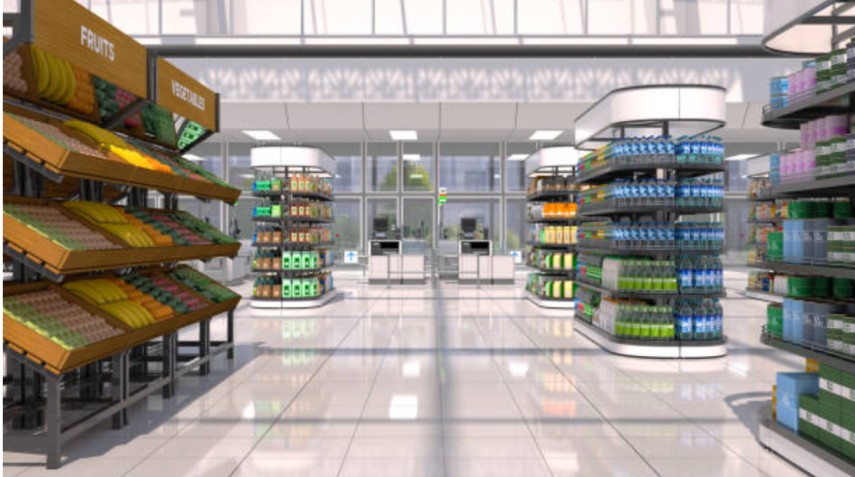The onset of new age smart stores is now redefining the retail sector as a result of rapid technological advancements. One of the most noteworthy innovations is the integration of Electronic Shelf Labels (ESLs) with Point-of-Sale (POS) systems. Retailers are constantly looking for ways to eliminate in-store efficiency hurdles, minimize pricing inaccuracies, and manage seamless omnichannel flows, and the integration of ESLs with POS now serves as a retail revolution.
This article provides insights on retail efficiency by examining the POS solution integration with ESL systems. It is targeted for B2B audiences such as retail IT departments, display solution providers, and retail technology consultants and also encourages thinking about the impact on retail signage ideas, automation of pricing procedures, and inter-store communications.
Understanding the Need for POS and ESL Integration
In-store retail pricing often starts with a manual template revision for both the POS system and physical shelf labels. This two-step process is not only time consuming, but also vulnerable to price discrepancies that frustrate customers and impact operational trustworthiness.
The integration of ESL with POS systems leads to the centralization and streamlining of workflows. Updates to the ESLs on the sales floor are made in real time with the POS change made to price, promotion, or new product information. With ESLs, businesses can enforce greater price equity, enhance the execution pace of promotional activities, and improve customer trust.
This benefit is especially pivotal for B2B retailers who manage multiple store locations, enabling retailers to manage thousands of SKUs.
Operational ESL-POS Integration Advantages
The integration of ESL with POS systems brings several ESL operational advantages, including:
Unified Command and Instant Notifications
Integrating ESL and POS systems brings with it greater efficiency in performing PESL updates. With ESLs and the POS system connected, stores can implement changes instantly, such as flash sales, seasonal pricing, or inventory-driven discounts across all labels requiring no manual effort.
This is crucial for multi-location retail chains requiring unified messaging and pricing as they need maximum market agility. Integrated systems also improve accuracy and eliminate the odds of the shelf price and checkout price mismatch.
Reduced Labor Costs and Optimization
Store staff no longer need to spend hours relabeling prices because automation handles these updates. This shift allows staff to concentrate on more valuable areas such as merchandising, inventory control, and even customer interaction.
Moreover, automation of prices saves substantial costs per employee. This is specifically beneficial for retailers with regularly scheduled promotions or implementing recurring dynamic pricing. The Educational Services Computerized ESL and POS systems guarantee each pricing tier issuance is done precisely as required, thereby eliminating costs and saving valuable time.
Positive Feedback on Customer Experience and Trust in the Brand
To positively engage the customer, price clarity is essential. Ensuring that both the shelf and terminal display prices match eliminates doubt and increases trust for the customers making the transactions.
Moreover, customers can make informed and faster decisions through the use of digital screens that display information, which can be linked to the POS for more precise customer interactions. The positive outcome of this allows customers to be more happy, therefore increasing brand loyalty.
Impact of ESL systems connected to POS on the retail signage strategies
The introduction of ESL systems connected to POS platforms streamlines backend operations but also sparks innovation in developing smart retail signage. Data-driven signage can provide real-time information, allowing retailers to create heightened interaction and tailored experiences on the shelf.
Here’s the influence modern signage is undergoing due to POS-driven ESL systems:
- Dynamic content: ESL systems are capable of adjusting the time-based content to promotional messages and even product ratings.
- Localized messaging: Franchise stores can display different signage for varying priced promos based on geographical regions.
- Interactive elements: ESL systems can have QR codes or NFC tags that link to product reviews or tutorials which inspires shopper interaction.
- Seasonal or event-driven signage: Signage can be instantly configured through the POS for campaigns associated with local events, holidays, and flash sales.
With the introduction of POS systems, retail signage ideas can now be automated to respond to real-time movements, and feedback.
ESL, POS and Point of Purchase Displays Interconnection
The integration of ESL and POS systems is shifting in-store advertising for brands and retailers. A notable area of concern is with point of purchase displays, where the set promotional messages and pricing are essential in driving impulse decisions.
Integrating ESLs with point of purchase displays (POP) and linking them with the POS systems allows retailers to:
- Maintain uniform pricing and promotional offers
- Instantly change discount and product information
- Update discount and product information.
- Automatically push slow-moving inventory.
- Embed dynamic discount coupons and bonus offers associated with loyalty programs.
Through real-time consumer data and POS systems, static displays can be transformed into dynamic points of purchase systems, having responsive sales displays that adapt to customer needs.
Looking Ahead: Using Analytics and Artificial Intelligence within POS-ESL Systems
The next stage for POS-ESL spans will be automation and predictive analytics with the integration of machine learning and artificial intelligence.
Retailers can expect that in the coming years, POS-connected ESL systems will:
- Track and modify pricing based on shopping trends and in real-time
- Determine the best times for promotions based on historical data and current shopper traffic
- Enable hyper-personalization, adjusting customer messages based on profile information
- Enable cross-channel experiences through integration with mobile applications
These systems will be empowering for B2B retail companies, enabling them to manage the customer journey from the shelf label to the checkout and even further. With ESLs acting as both digital displays and data-driven tools, the retail space will be smarter, more connected, and technology enriched.
Conclusion
Strategic integration of ESL and POS systems is shifting the retail sector to streamline operations as part of a digital transformation. It is fast becoming a foundational technology for operational efficiency, uniformity across departments, and a distinct edge over competitors. Automation of operations is not the only benefit. Integrating both systems can lead to the development of compelling retail signage ideas that actively engage customers.
Businesses can implement ESL systems and smart point of purchase displays with a centralized POS system to enhance customer experiences and automate the processes of crafting promotions and reducing overhead. B2B marketers can take advantage of this as it allows the convergence of marketing, IT, and operations into a singular intelligent signage and pricing framework.
The first adopters of customer obsession retail technologies like data-driven POS systems and ESLs will shape the customer-centric store of the future.


